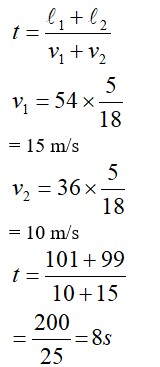Motion in a Straight Line
Get insights from 82 questions on Motion in a Straight Line, answered by students, alumni, and experts. You may also ask and answer any question you like about Motion in a Straight Line
Follow Ask QuestionQuestions
Discussions
Active Users
Followers
New answer posted
3 months agoContributor-Level 10
Average speed
(d) Initial velocity
Final velocity
Change in velocity
Momentum gain is along
Force experienced is along
Force experienced is in North-East direction.
New answer posted
3 months agoContributor-Level 10
h = u²/2g, u = √2gh
Now, S = h/3
S = ut + ½at²
h/3 = √2ght - ½gt²
t² - 2√ (2h/g)t + 2h/3g = 0
Using quadratic formula for t:
t = ( 2√ (2h/g) ± √ (8h/g) - 4 (2h/3g) / 2
t = √ (2h/g) ± √ (2h/g - 2h/3g) = √ (2h/g) ± √ (4h/3g)
t? /t? = (√ (2h/g) - √ (4h/3g) / (√ (2h/g) + √ (4h/3g)
t? /t? = (√2 - √ (4/3) / (√2 + √ (4/3) = (√6 - 2)/ (√6 + 2)
(Note: There is a calculation error in the provided solution. Re-evaluating the physics.)
h/3 = (√2gh)t - ½gt²
(g/2)t² - (√2gh)t + h/3 = 0
t = (√2gh ± √ (2gh - 4 (g/2) (h/3)/g = (√2gh ± √ (4gh/3)/g
t? /t? = (√2gh - 2√gh/√3)/ (√2gh + 2√gh/√3)
New answer posted
4 months agoContributor-Level 10
Air resistance resists the motion of an object. In this case, the net acceleration is lesser than 'g' and it shrinks as the speed increases. This makes the object to speed up more slowly. Ultimately, it reaches a constant terminal velocity which is lower for large-area ones and higher for heavy and streamlined ones.
New answer posted
4 months agoContributor-Level 10
Suppose the position-time graph is a straight line, in this case, the velocity is constant. This means that there is no acceleration.
If the graph is curved, velocity is changing, which means that there is acceleration. If the graph is concave, the slopes will get more positive with time. This means that there is positive acceleration. If the graph is cap-shaped, the slope will become more negative with time. This is known as negative acceleration.
New answer posted
4 months agoContributor-Level 10
To graph motion in a straight line, you need to visualise the relationship between different kinematic quantities like position, velocity and time. Suppose an object moves with a constant velocity, the position-time graph will be a straight line with constant slope. If the object accelerates, the slope of position-time graph will change with time and result in a curved line.
New answer posted
4 months agoContributor-Level 10
Let the distance travelled is x, so
speed of escalator for ground
speed of boy concerning the escalator
speed of boy concerning ground
The time taken by him to walk up the moving escalator = t =
Taking an Exam? Selecting a College?
Get authentic answers from experts, students and alumni that you won't find anywhere else
Sign Up on ShikshaOn Shiksha, get access to
- 66k Colleges
- 1.2k Exams
- 680k Reviews
- 1800k Answers



